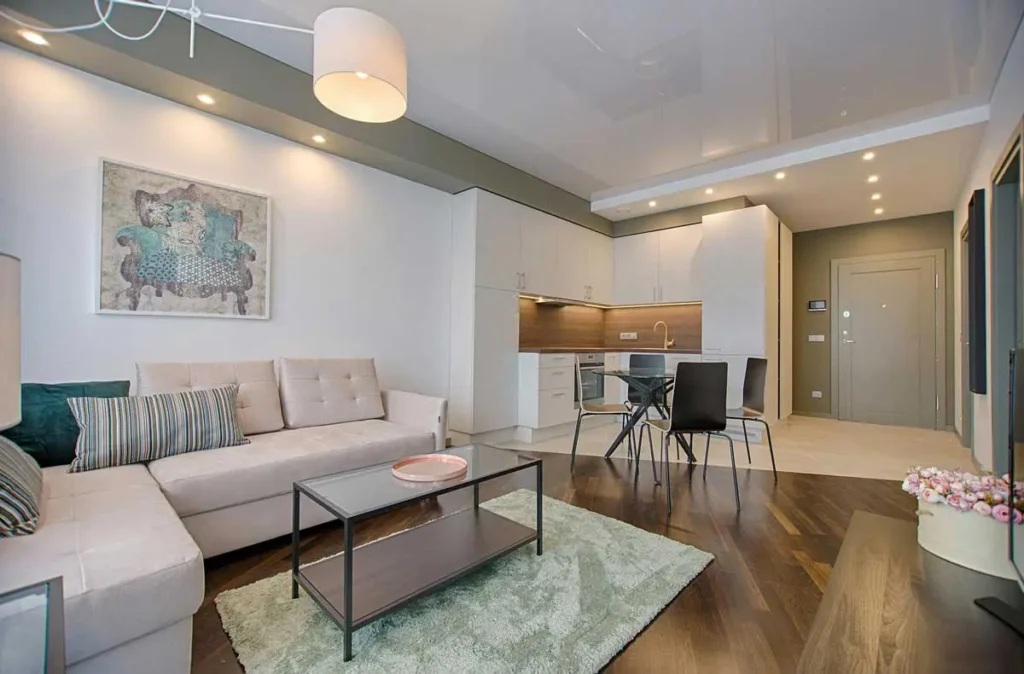
“How to Design a Living Room” – Imagine walking into your living room and feeling instantly at ease, surrounded by a space that perfectly reflects your style and meets all your needs. Sounds like a dream, right? 🏠✨
But for many, designing a living room can feel like navigating a maze of decisions. Where should the sofa go? What color palette works best? How can I make it both stylish and functional? These questions can leave even the most enthusiastic home decorator feeling overwhelmed. Don’t worry, though – we’re here to guide you through the process step by step.
In this comprehensive guide, we’ll explore everything from assessing your space to adding those final personal touches. We’ll cover color schemes, furniture arrangement, lighting design, and more. By the end, you’ll have all the tools you need to transform your living room into a space that’s not just beautiful, but also perfectly tailored to your lifestyle. Let’s dive in and discover how to create the living room of your dreams!
You Might Like : How Can I Make My Living Room Look Fancy?
Assessing Your Living Room Space
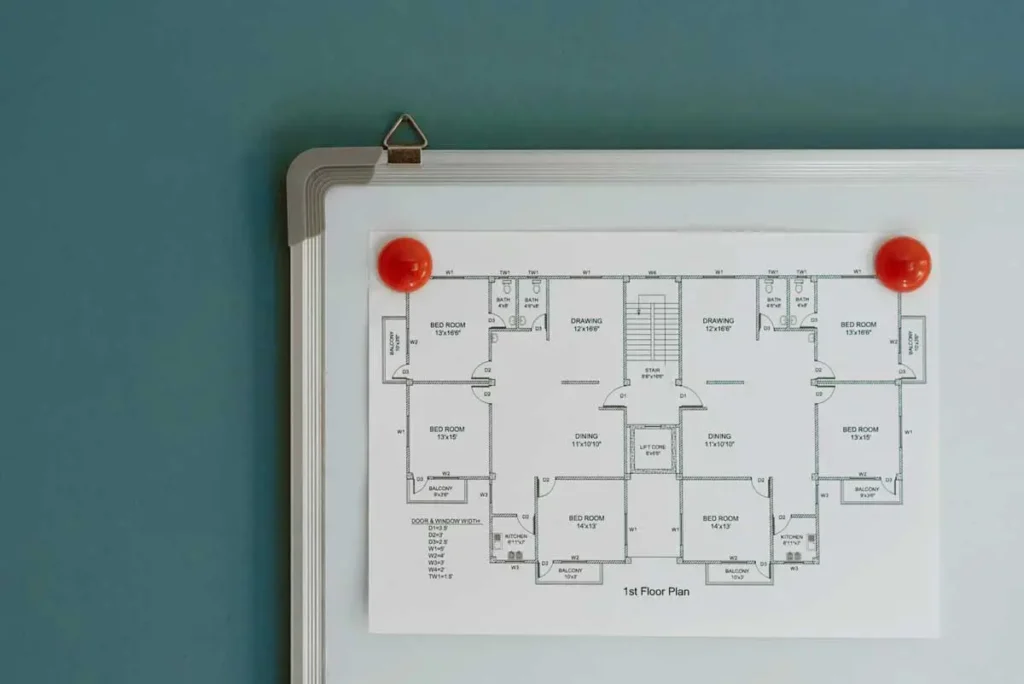
Before diving into the design process, it’s crucial to thoroughly assess your living room space. This initial step sets the foundation for all your design decisions and ensures a functional and aesthetically pleasing result.
Measuring and mapping the room
Start by taking accurate measurements of your living room. Use a tape measure to record the length, width, and height of the space. Create a detailed floor plan, noting the location of windows, doors, and any fixed elements like fireplaces or built-in shelving. This map will be invaluable when planning furniture placement and traffic flow.
| Measurement | Importance |
| Length | Determines overall space available |
| Width | Influences furniture arrangement |
| Height | Affects lighting and decor choices |
Identifying focal points
Every living room has natural focal points that draw the eye. These could be:
- A fireplace
- Large windows with a view
- An architectural feature like exposed beams
- A media center
Identify these focal points and plan your design around them to create a cohesive and balanced space.
Considering natural light sources
Natural light plays a crucial role in the ambiance of your living room. Observe how light enters the space throughout the day and note any areas that remain dark. This information will guide your lighting design and help you determine the best placement for seating areas and activities that require good lighting.
Evaluating existing architectural features
Take stock of existing architectural elements such as:
- Crown molding
- Wainscoting
- Columns
- Arched doorways
These features can be highlighted or downplayed depending on your design goals. Understanding these elements will help you make informed decisions about color schemes and decor that complement your living room’s inherent character.
With a thorough assessment of your living room space, you’re now ready to move on to choosing a color scheme that will set the tone for your entire design.
Choosing a Color Scheme

Now that you’ve assessed your living room space, it’s time to dive into the exciting world of color selection. The right color scheme can transform your living room from ordinary to extraordinary, setting the mood and reflecting your personal style.
Understanding color psychology
Colors have a profound impact on our emotions and behavior. Here’s a quick overview of common color associations:
| Color | Psychological Effect |
| Blue | Calm, trust, stability |
| Green | Nature, growth, harmony |
| Red | Energy, passion, excitement |
| Yellow | Happiness, optimism |
| Purple | Luxury, creativity |
Selecting a base color
Choose a base color that aligns with the desired atmosphere of your living room. Consider these factors:
- Room size and natural light
- Existing furniture and fixtures
- Your personal preferences
Incorporating accent colors
Accent colors add depth and interest to your living room. Use the 60-30-10 rule as a guide:
- 60% dominant color (walls, large furniture)
- 30% secondary color (smaller furniture, curtains)
- 10% accent color (accessories, artwork)
Balancing warm and cool tones
Create harmony by balancing warm and cool tones:
- Warm colors: Reds, oranges, yellows
- Cool colors: Blues, greens, purples
Mix these tones to achieve a well-rounded and inviting space. For example, pair cool blue walls with warm wooden furniture and golden accents.
With your color scheme in place, you’re ready to move on to selecting and arranging furniture that complements your chosen palette.
Furniture Selection and Arrangement
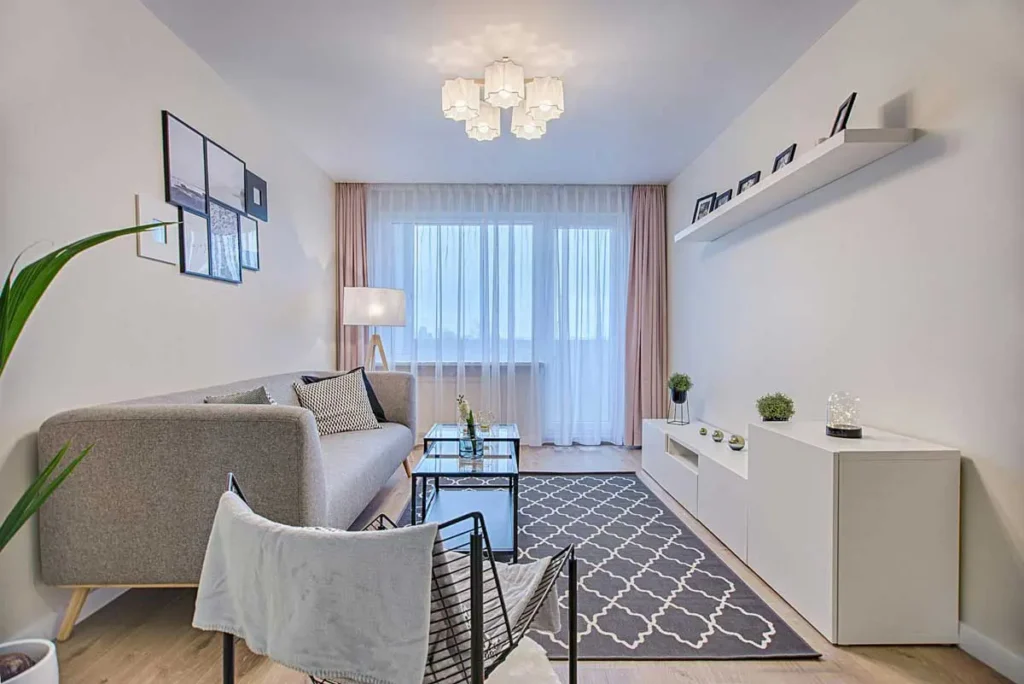
Now that you have a color scheme in mind, let’s focus on selecting and arranging furniture to create a functional and inviting living room.
Determining Essential Pieces
Start by identifying the must-have furniture items for your living room:
- Seating (sofas, chairs)
- Coffee table
- TV stand or media console
- Storage units (bookcases, cabinets)
Scaling Furniture to Room Size
Choose furniture that fits your space appropriately:
| Room Size | Furniture Scale |
| Small | Compact, multi functional |
| Medium | Standard-sized pieces |
| Large | Larger, statement pieces |
Creating Conversation Areas
Arrange seating to promote interaction:
- Face chairs towards the sofa
- Keep seating pieces within 8 feet of each other
- Use area rugs to define conversation zones
Ensuring Traffic Flow
Leave clear pathways for easy movement:
- Allow 30-36 inches between furniture pieces
- Create a natural flow from entrances to seating areas
- Avoid blocking windows or doorways
Mixing Styles for Visual Interest
Combine different furniture styles to add character:
- Choose a dominant style (e.g., modern)
- Incorporate accent pieces from complementary styles (e.g., mid-century)
- Use textures and patterns to tie different styles together
By carefully selecting and arranging your furniture, you’ll create a living room that’s both functional and visually appealing. Next, we’ll explore how lighting can enhance the ambiance of your newly arranged space.
Lighting Design for Ambiance
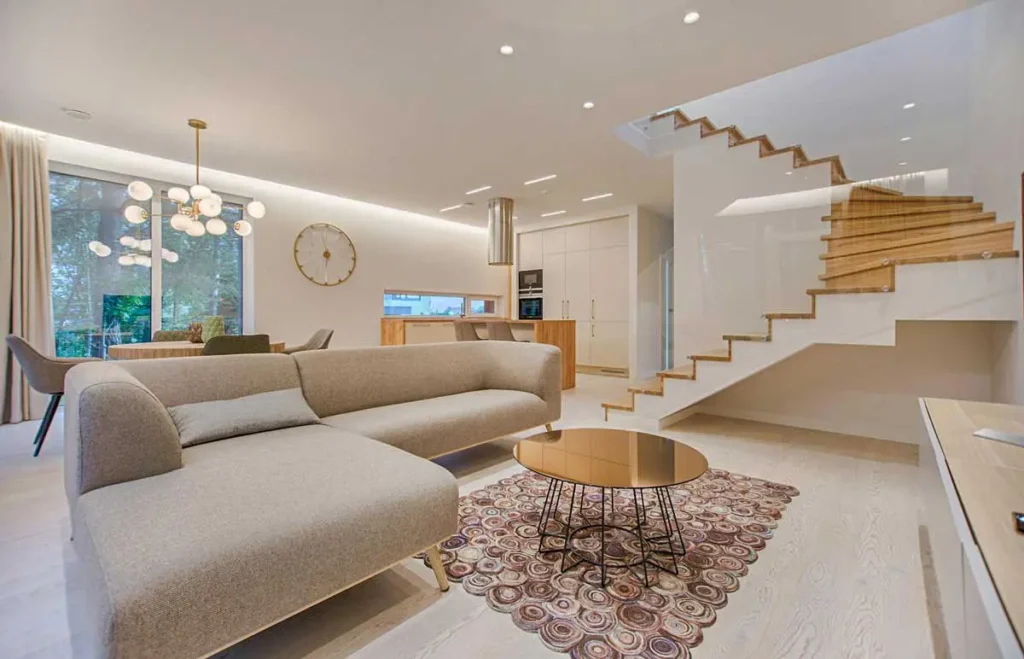
Now that we’ve covered furniture selection and arrangement, let’s explore how lighting can transform your living room’s atmosphere.
Layering different light sources
Creating a well-lit living room involves more than just installing a single overhead light. By layering different light sources, you can achieve a balanced and inviting ambiance. Consider the following combination:
- Ambient lighting: General illumination for the entire room
- Accent lighting: Highlights specific areas or objects
- Task lighting: Focused light for reading or other activities
| Light Type | Purpose | Example Fixtures |
| Ambient | Overall illumination | Ceiling fixtures, recessed lights |
| Accent | Highlight features | Wall sconces, picture lights |
| Task | Highlight features | Wall sconces, picture lights |
Selecting statement light fixtures
A striking light fixture can serve as a focal point in your living room. Choose a piece that complements your overall design style:
- Modern: Sleek pendant lights or geometric chandeliers
- Traditional: Crystal chandeliers or ornate ceiling fixtures
- Rustic: Industrial-style fixtures or lantern-inspired designs
Incorporating task lighting
Ensure your living room is functional by including task lighting in key areas:
- Reading nooks: Floor lamps or adjustable wall-mounted lights
- Work spaces: Desk lamps with directional heads
- Entertainment centers: LED strips behind TVs for reduced eye strain
Using dimmers for flexibility
Install dimmer switches to easily adjust the mood of your living room. This allows you to:
- Create a cozy atmosphere for movie nights
- Brighten the space for cleaning or daytime activities
- Set the perfect ambiance for entertaining guests
By thoughtfully designing your living room’s lighting, you can create a versatile space that adapts to various needs and occasions. Next, we’ll explore how to add texture and depth to your living room design.
Adding Texture and Depth

Now that we’ve covered the basics of furniture arrangement and lighting, let’s explore how to add texture and depth to your living room, creating a more inviting and visually interesting space.
Selecting Area Rugs
Area rugs are essential for adding warmth and defining spaces within your living room. Consider the following factors when choosing a rug:
- Size: Ensure the rug is large enough to anchor your furniture
- Material: Options range from plush wool to durable sisal
- Pattern: Can complement or contrast with your existing decor
Choosing Window Treatments
Window treatments not only provide privacy but also contribute to the room’s overall texture. Options include:
| Treatment Type | Texture | Light Control |
| Curtains | Soft | Moderate |
| Blinds | Sleek | High |
| Shades | Varied | Adjustable |
Incorporating Throw Pillows and Blankets
These accessories are perfect for introducing color, pattern, and texture:
- Mix and match pillow sizes and shapes
- Experiment with different fabrics like velvet, linen, or faux fur
- Layer throws over furniture for added coziness
Mixing Materials and Finishes
Create visual interest by combining different materials:
- Pair smooth leather with rough-textured fabrics
- Contrast matte finishes with glossy surfaces
- Introduce natural elements like wood or stone alongside metallic accents
By thoughtfully incorporating these elements, you’ll create a living room with depth and character that invites relaxation and conversation.
Personalizing with Decor
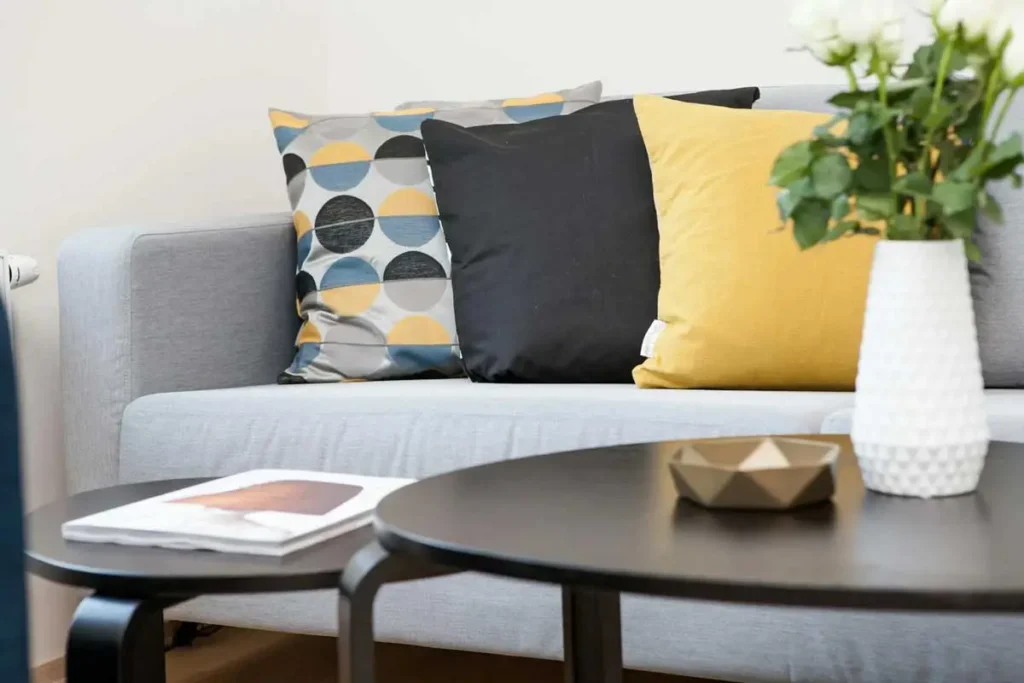
Now that we’ve covered the essential elements of living room design, it’s time to add your personal touch through thoughtful decor choices. This step is crucial in transforming your living room from a well-designed space into a true reflection of your personality and style.
Displaying Artwork and Photographs
Artwork and photographs are powerful tools for personalizing your living room. Consider creating a gallery wall with a mix of framed prints, paintings, and personal photos. For a cohesive look, choose frames that complement your color scheme.
| Frame Style | Best For |
| Minimalist | Modern decor |
| Ornate | Traditional decor |
| Rustic | Farmhouse or bohemian style |
Incorporating Plants and Greenery
Adding plants brings life and freshness to your living room. Choose low-maintenance options like snake plants or pothos for busy households, or make a statement with larger plants like fiddle leaf figs.
Arranging Decorative Objects
When arranging decorative objects, follow these tips:
- Group items in odd numbers
- Vary heights and textures
- Use trays to corral smaller items
- Rotate seasonal decor to keep the space fresh
Creating a Focal Wall or Feature
A focal wall can tie your decor together and make a bold statement. Consider:
- An accent wall with bold wallpaper or paint
- A large piece of statement artwork
- A floor-to-ceiling bookshelf
- A unique architectural feature like exposed brick
By personalizing your living room with these decor elements, you’ll create a space that’s not only beautiful but also uniquely yours. Next, we’ll explore how to maximize storage and functionality in your newly designed living room.
Maximizing Storage and Functionality
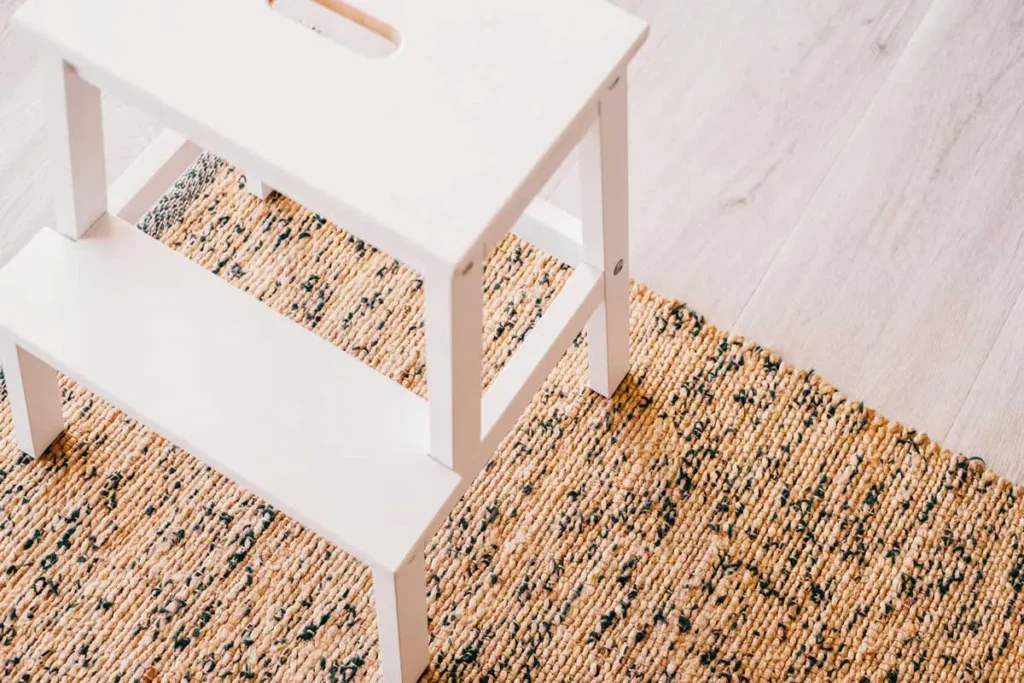
Now that we’ve personalized your living room with decor, let’s focus on making the most of your space. Maximizing storage and functionality is crucial for a well-designed living room that meets all your needs.
Integrating hidden storage solutions
Hidden storage is key to maintaining a clutter-free living room. Consider these options:
- Built-in shelving units
- Ottoman with storage compartment
- Coffee table with hidden drawers
- Floating shelves for vertical storage
Selecting multi-functional furniture
Choose furniture that serves multiple purposes to optimize your living room space:
| Furniture Item | Multi-functional Features |
| Sofa bed | Seating and guest sleeping area |
| Nesting tables | Expandable surface area |
| Storage bench | Seating and storage combined |
| Folding desk | Work space that can be tucked away |
Organizing entertainment systems
Keep your entertainment area tidy and functional:
- Use cable management systems to hide wires
- Install a wall-mounted TV to save floor space
- Opt for a media console with closed storage for equipment
- Utilize vertical space with tall, narrow shelving units
Creating designated activity zones
Divide your living room into distinct areas for different activities:
- Reading nook with a comfortable chair and good lighting
- Conversation area centered around the main seating arrangement
- Work or hobby space with appropriate storage and lighting
- Media zone focused on the TV or entertainment system
By implementing these strategies, you’ll create a living room that’s not only stylish but also highly functional and organized.
Conclusion
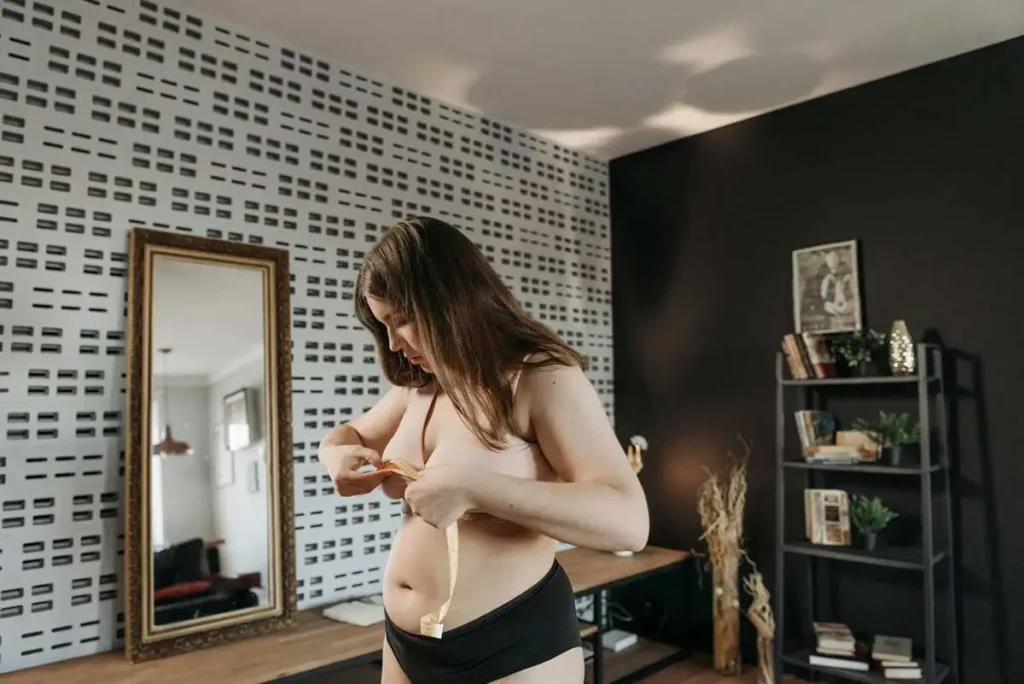
Designing a living room is a creative journey that combines functionality with personal style. By carefully assessing your space, selecting a cohesive color scheme, and choosing furniture that fits both your needs and aesthetic preferences, you can create a welcoming and comfortable environment. Thoughtful lighting design, the addition of textures, and personalized decor elements further enhance the room’s ambiance and reflect your unique personality.
Remember, the key to a well-designed living room lies in balancing form and function. Maximize storage and functionality without compromising on style, and don’t be afraid to experiment with different arrangements until you find the perfect layout. With these principles in mind, you can transform your living room into a space that not only looks beautiful but also serves as a cozy haven for relaxation and entertainment.
FAQs

With over 5 years of experience in web design, development, and graphics, I specialize in creating high-quality, engaging interior design content. My goal is to inspire and inform design enthusiasts, offering insights on aesthetics, trends, and practical tips. I’m dedicated to delivering exceptional, visually appealing content to elevate any space.


